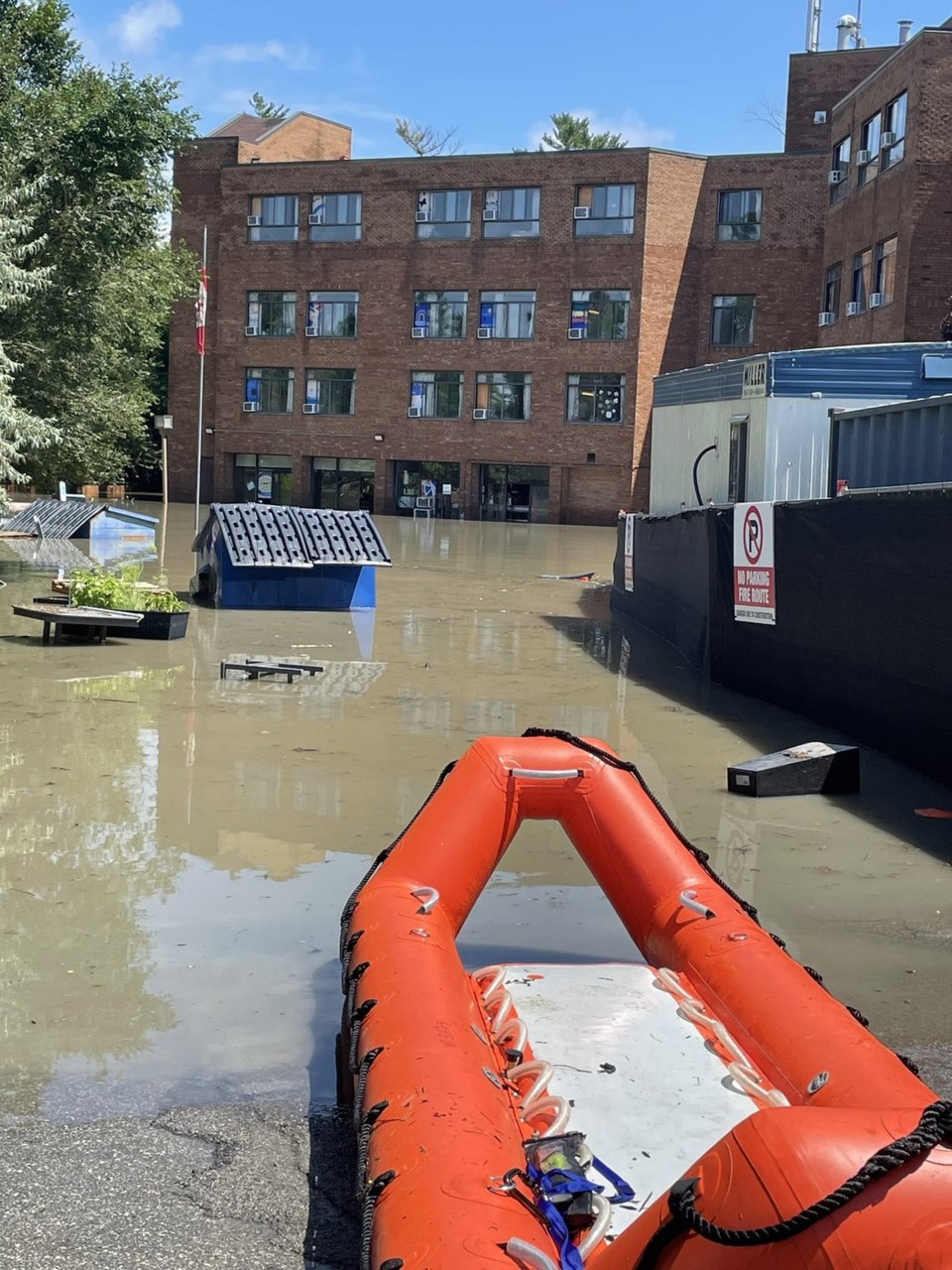As floodwaters poured into a Mississauga long-term care home –submerging much of the ground floor – rescue crews worked to rapidly get residents into inflatable rafts to evacuate the property while others worked on stopping the water from rising further.
The operation that unfolded over the course of 12 hours on Tuesday following torrential rains eventually saw more than 100 residents safely moved out of the nursing home, some by raft and others on foot once the water receded.
Mississauga Fire Captain Dan Herd said the evacuation of the Tyndall Seniors Village, which saw multiple emergency services from across the Greater Toronto Area come together, was on a scale he hadn't seen before.
"There was water inside the building, the first floor – in between probably three to four feet high on the walls – and some windows were broken, damaged,” Herd said, adding that the parking lot was inundated by water at one point.
"We set up an instant action plan, and we started to move thousands of litres of water at a time ... the water rescue team was using their rescue boats to assist the removal of ambulatory patients and occupants."
The flooding began after incredibly heavy rains on Tuesday caused the nearby Etobicoke Creek to overflow, Herd said.
Once enough floodwater had been pumped out of the home, some residents were able to walk out of the building, he said. Those who were unable to walk were carried down stairs and out of the building by first responders using lifting equipment, Herd said.
"This is my first personal experience of something to this size,” he said of the operation.
None of the residents were injured, said Tom Kukolic, acting deputy chief for Peel Region's paramedics service.
Once first responders determined that none of the 116 residents needed emergency care, efforts then shifted to a "safe extrication and relocation" operation, Kukolic said, with residents eventually taken to two long-term care homes and two hotels.
"Once the paramedics and firefighters were able to bring the residents out of the home and move them to the triage area, we then had assistance from Peel Wheel-Trans, Toronto TTC Wheel-Trans, and Mississauga Transit,” Kukolic said.
The relocation effort was “a seamless transition” thanks to the collaboration of several emergency response teams, including York Region and Toronto paramedics, he said.
“Extricating people, it’s very difficult. It is very laborious work ... however, what we do from a paramedic practice perspective, is ensure that we have enough people to safely move residents," Kukolic said.
Tuesday's massive downpour caused chaos across Toronto and its surrounding communities, with flooding shutting down several major routes and terminals and knocking out power to thousands.
Mississauga Fire Chief Deryn Rizzi called the response at the nursing home “a great example” of how multiple agencies across the Greater Toronto Area can work together.
"We are there to work collaboratively together, to address the incident to achieve a common goal, which in this case, it was to evacuate the residents safely," he said.
For Kukolic, the full-day operation showed how preparation can help first responders deal with large-scale responses triggered by sudden events such as Tuesday's flooding.
"I was proud to be a member of paramedic services and a first responder,” he said.
"It was really great to see how everybody came together to ensure that our most vulnerable were taken care of.”
This report by The Canadian Press was first published July 18, 2024.
Rianna Lim, The Canadian Press



